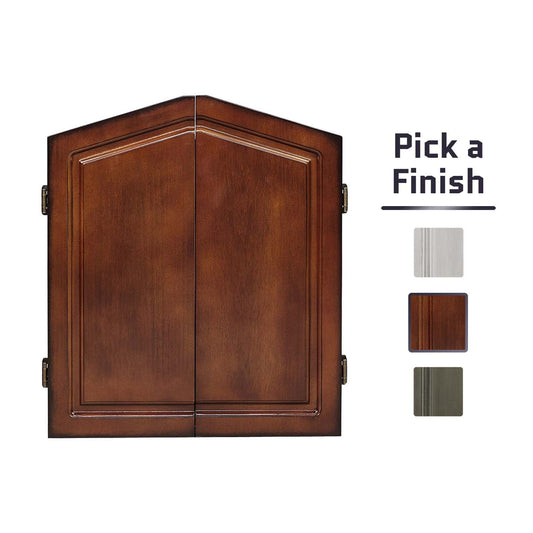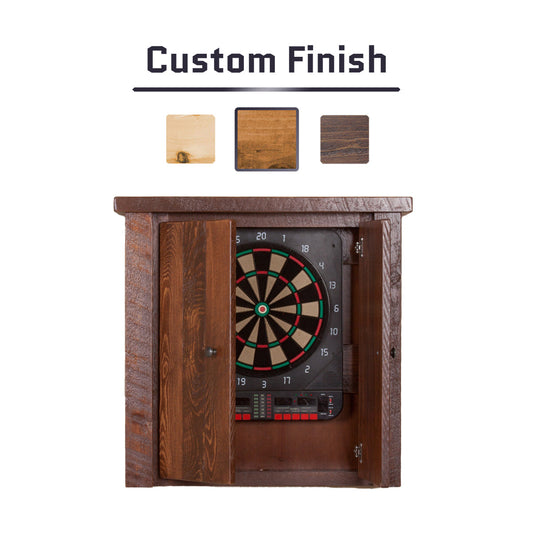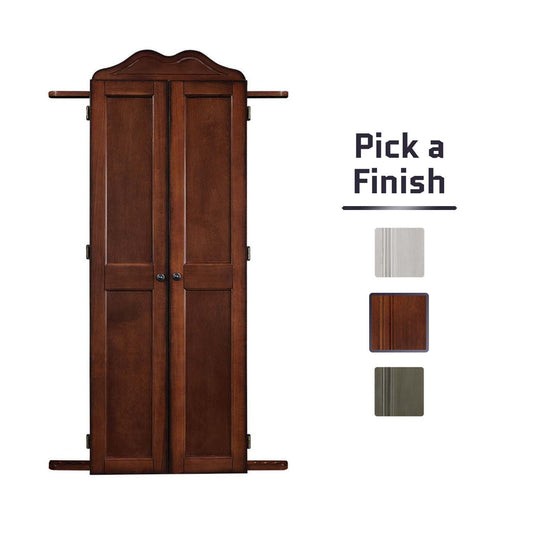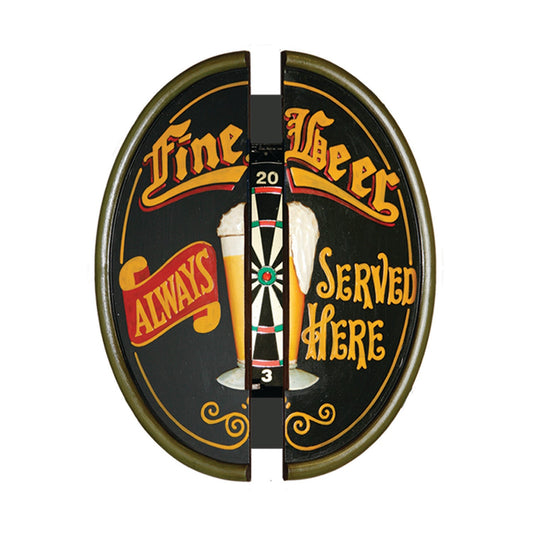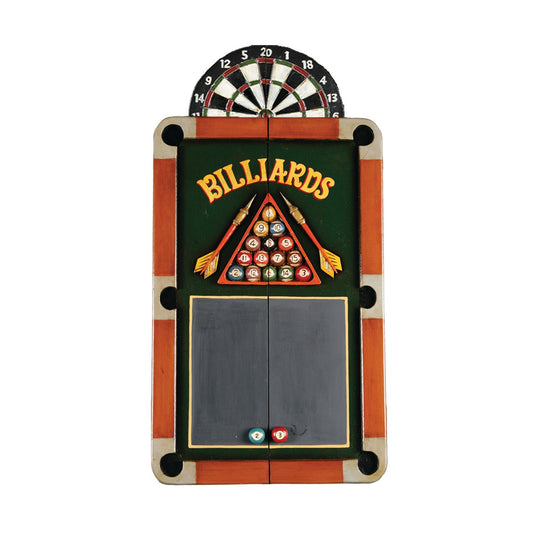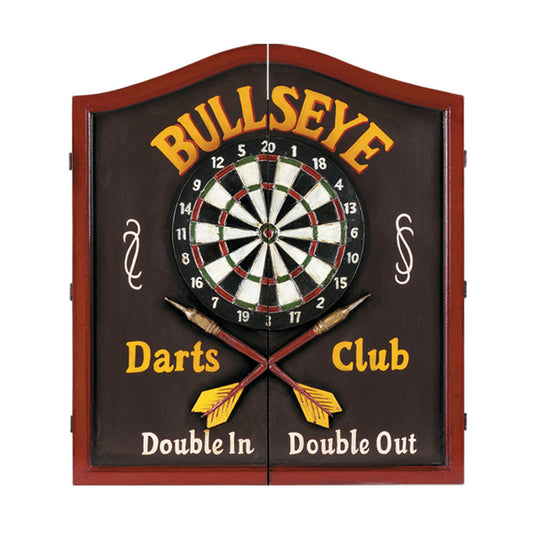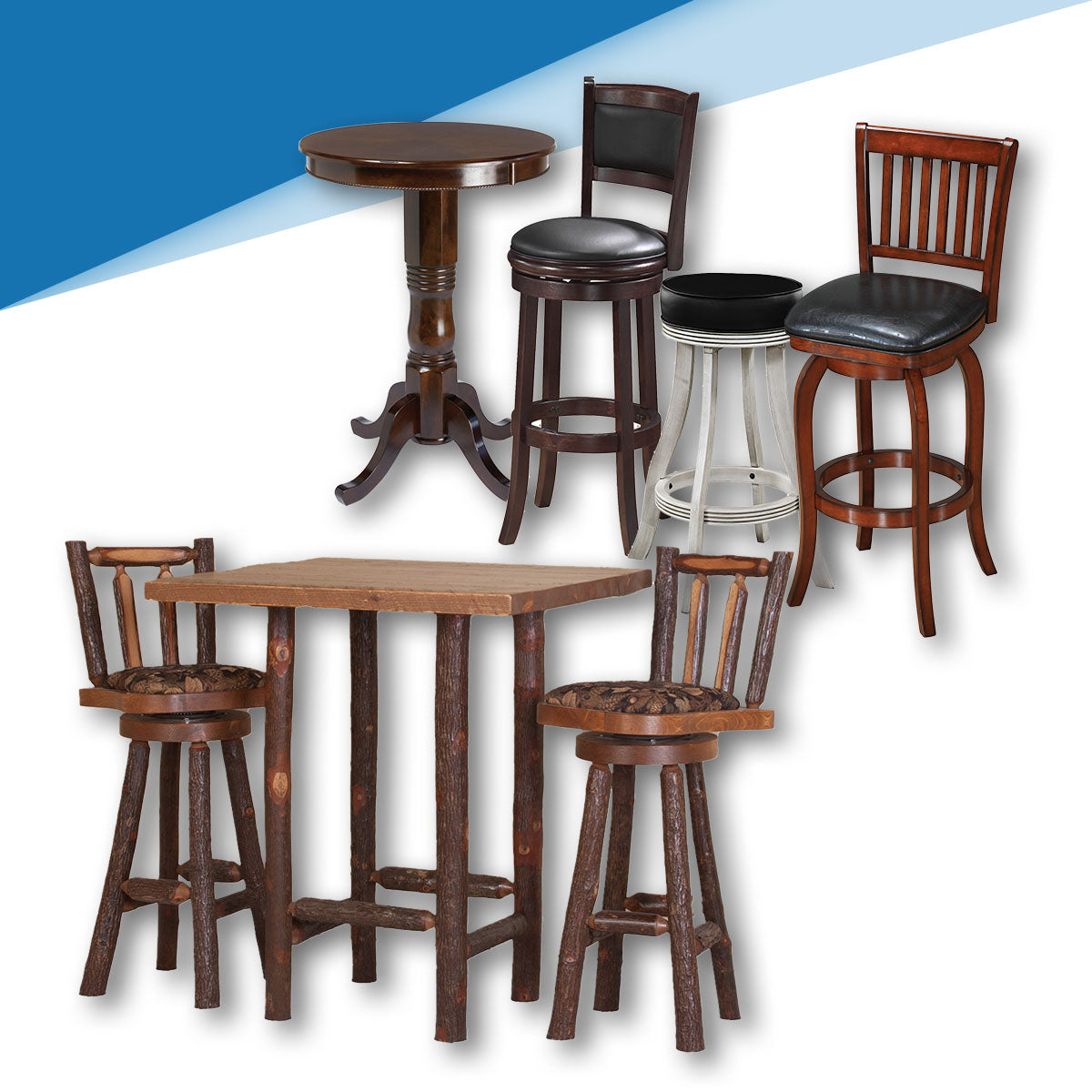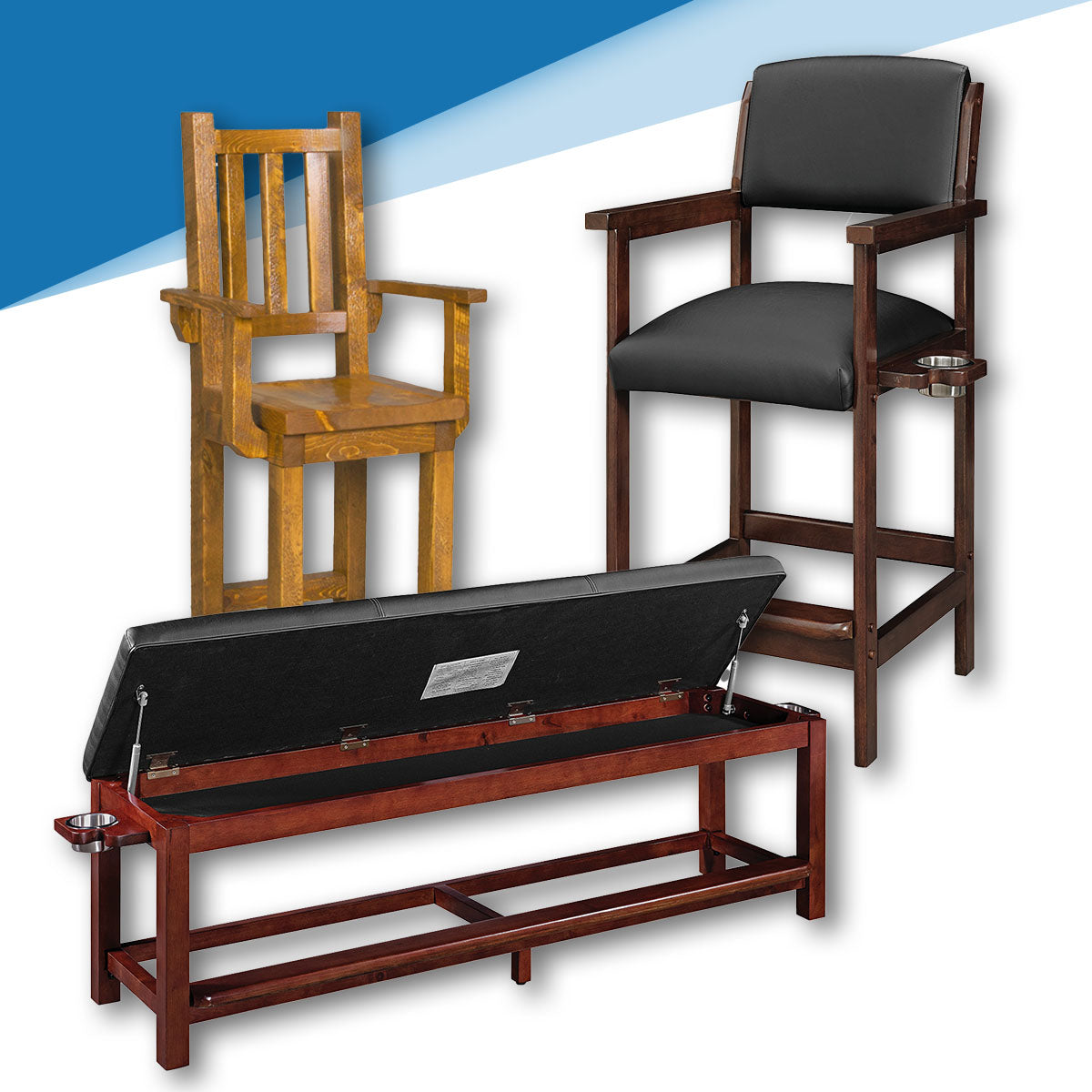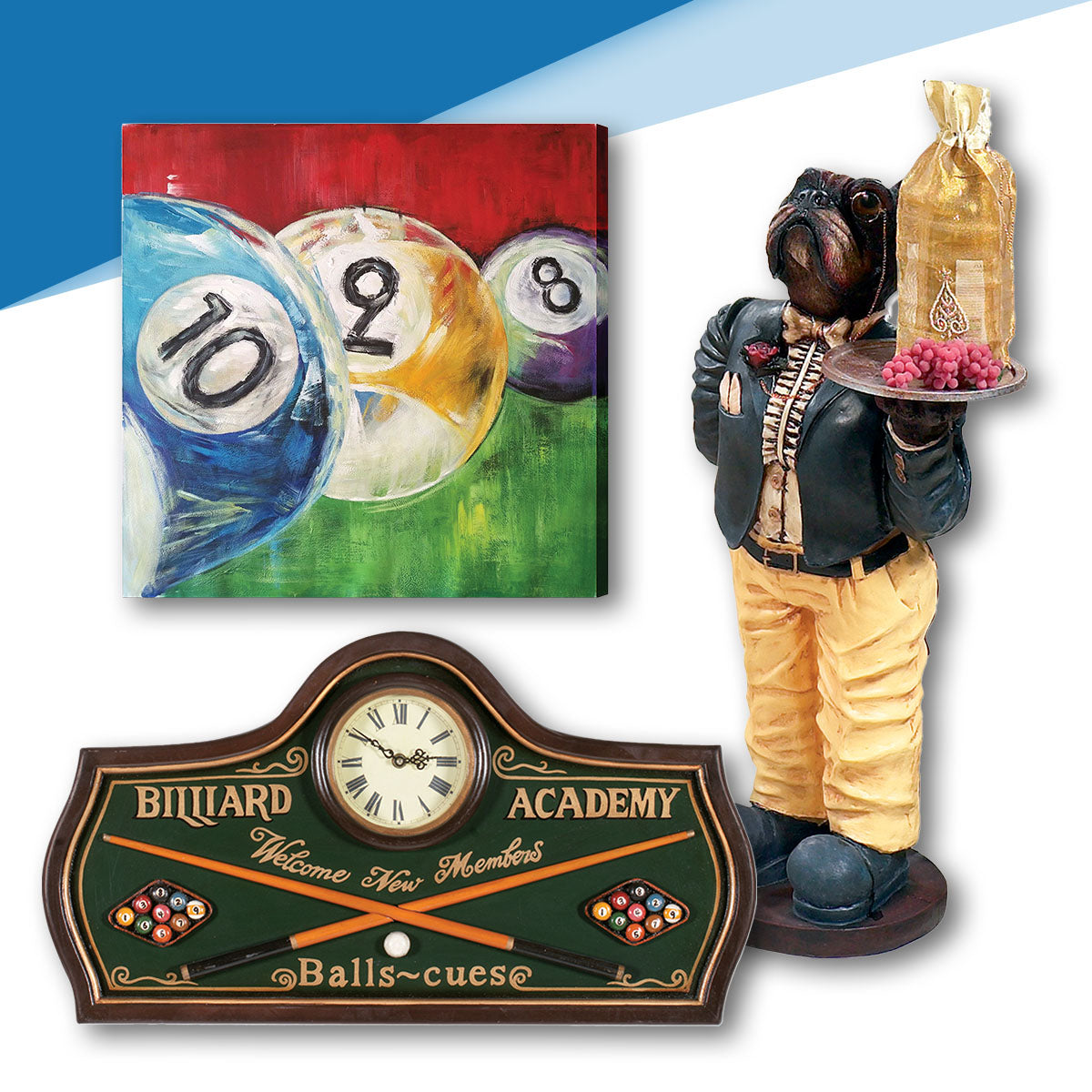Written by Daddy Cappuccino
7-minute read
Ah, the classic game of darts - a perfect addition to any game room or man cave. But before you unleash your inner dart-throwing champion and adorn your space with a stylish dartboard cabinet, it's essential to get your setup just right. The secret? Knowing exactly how far to stand from a dartboard and the proper height for it. In this guide, we'll break down the crucial details to help you create the ultimate darts haven.
Table of Contents
- Why Dartboard Distance and Height Matter
- How to Measure Dartboard Distance
- Setting the Correct Dartboard Height
- Step-by-Step Guide to Hanging a Dartboard
- Additional Tips for the Ideal Dartboard Setup
- Conclusion
1. Why Dartboard Distance and Height Matter
If you're looking to become a master of darts, it all starts with nailing the basics. And that means understanding why the distance and height of your dartboard matter so much.
So, why does it matter? Well, imagine this: you step up to take your shot, aiming for that elusive bullseye, and... thunk! Your dart lands way off target. Frustrating, right?
The distance you stand from the dartboard and its height on the wall are the unsung heroes of your dart game. They're not just random measurements; they're your secret weapons for precision and accuracy.
First off, dartboard distance. It's not a suggestion; it's a science. Placing your toe right at the oche (that's darts lingo for the throw line) at the correct distance is your ticket to consistent throws. Too close or too far, and you'll find yourself missing the mark more often than not.
And then there's the height. Did you know that it's set based on the eye level of a six-foot-tall person? It's not just for aesthetics; it's for ensuring a level playing field. Too high, and you'll be aiming for the stars. Too low, and you'll practically be throwing at your own toes.
So, my friend, understanding why dart board distance and height matter is your first step toward dartboard domination. In the following sections, we'll delve deeper into how to measure these critical dimensions and get your setup just right. Get ready to take your dart game to a whole new level!

2. How to Measure Dartboard Distance
Alright, my fellow darts enthusiast, it's time to get down to the nitty-gritty of dartboard setup. The first thing you'll want to tackle is measuring the distance from the oche (throw line) to the dartboard. Precision is the name of the game here.
You see, the official standard for dartboard distance, used in professional dart games worldwide, is 7 feet and 9.25 inches, or if you prefer the metric system, that's about 2.37 meters. Why is this precise measurement crucial? Well, it ensures a level playing field for everyone, no matter where they're playing darts.
Here's how you do it:
- Find Your Oche: Start by locating the oche, which is also known as the throw line. In most cases, it's a clearly marked line on the floor. Make sure no portion of either foot extends past the edge of the oche closest to the dartboard.
- Measure Horizontally: Using a measuring tape or a trusty ruler, measure from the front face of the dartboard to the oche. Ensure your measurement is 7 feet and 9.25 inches, or 2.37 meters. It's a good idea to double-check this to avoid any surprises during your games.
- Diagonal Distance (Optional): Some folks prefer to use the diagonal distance from the bullseye to the oche, which measures about 9 feet and 7.375 inches or approximately 2.931 meters. This is less common but entirely acceptable, especially in casual play.
Remember, accuracy is key. A well-measured dartboard distance sets the stage for fair and competitive games. So, grab your measuring tape, find that perfect spot for your oche, and let the games begin!

3. Setting the Correct Dartboard Height
Now that you've got the dartboard's horizontal distance sorted, it's time to focus on the height. If you're aiming for precision in your darts game, and who isn't, then this step is just as vital as measuring the distance.
The standard height for a dartboard, often referred to as the regulation height, is set at 5 feet and 8 inches, which translates to roughly 1.73 meters from the floor to the center of the bullseye. This measurement was carefully determined based on the eye-level of an average six-foot-tall person.
Here's how you can set your dartboard at the perfect height:
- Locate the Bullseye Height: Measure from the floor up to the center of the bullseye on the dartboard. Ensure it's precisely 5 feet and 8 inches or about 1.73 meters.
- Mount It Securely: Once you've got the height spot-on, make sure to securely mount the dartboard on the wall. Use appropriate fixtures and ensure it's level. You wouldn't want your dartboard to wobble during a critical throw.
- Check Your Eye-Level: Stand back at the oche (throw line) and confirm that the center of the bullseye aligns perfectly with your eye level. This is a key part of maintaining fairness in your darts games.
By setting the correct dart board height, you're ensuring that everyone has an equal chance at hitting those bullseyes. Plus, it adds a touch of professionalism to your game room.
4. Step-by-Step Guide to Hanging a Dartboard
Hanging a dartboard may seem like a straightforward task, but doing it correctly is crucial for an enjoyable and safe dart-throwing experience. Follow these steps to ensure you hang your dartboard like a pro:
Step 1: Gather Your Tools
Before you start, make sure you have all the necessary tools and materials on hand. You'll need a tape measure, a pencil or chalk for marking, a drill, wall plugs, screws, a level, and, of course, your dartboard. If you're using a dartboard cabinet (a stylish and functional addition to any game room), ensure it's ready for installation.
Step 2: Find the Perfect Location
Choose the ideal location for your dartboard. Ensure there is enough space in front of the dartboard and around the oche (throw line) to accommodate players comfortably. Make sure the dartboard is well-lit and free from any obstructions.
Step 3: Measure the Correct Height
As mentioned earlier, the regulation height for a dartboard is 5 feet 8 inches from the floor to the center of the bullseye. Measure and mark this height on the wall using your tape measure and pencil.
Step 4: Mark the Oche Position
Measure the horizontal distance from the front of the dartboard to the oche (throw line). In standard darts, this distance is 7 feet 9.25 inches. Mark the floor where the oche should be.
Step 5: Mount the Dartboard
Position the dartboard on the wall, aligning the center of the bullseye with the height mark you made earlier. Use your level to ensure the dartboard is perfectly straight. Mark the screw holes on the dartboard onto the wall.
Step 6: Drill and Attach the Dartboard
Drill holes into the wall where you marked the screw holes. Insert wall plugs if necessary, and then screw the dartboard securely to the wall. Make sure it's stable and doesn't wobble. If you're using a dartboard cabinet, ensure it's also securely attached to the wall.
Step 7: Set Up the Oche
Measure and mark the exact position of the oche on the floor, ensuring it's at the correct distance from the dartboard. You can use tape or create a physical marker, such as a wooden or metal strip.
Step 8: Check Your Setup
Double-check your work. Stand at the oche and ensure the distance and height are correct. The center of the bullseye should align with your eye level, and the oche should be at the regulation distance.
With your dartboard correctly hung and positioned, you're all set for countless hours of dart-throwing enjoyment. But before you embark on your dart-throwing journey, there are a few additional tips and considerations to keep in mind, which we'll explore in the next section.
5. Additional Tips for the Ideal Dartboard Setup
Now that you've successfully hung your dartboard, it's time to fine-tune your setup for the best dart-throwing experience. Here are some additional tips and considerations to enhance your game room:
1. Proper Lighting: Ensure that your dartboard area is well-lit. Adequate lighting helps you see the dartboard clearly and reduces shadows that can affect your aim. Consider installing dartboard-specific lighting to illuminate the board evenly.
2. Dartboard Cabinet: To protect your walls from stray darts and add a touch of elegance to your game room, you can place your dartboard inside a stylish dartboard cabinet. These cabinets often come with scoreboards and storage for your darts.
3. Dart Storage: Invest in a dart holder or stand to keep your darts organized and within easy reach. This not only adds convenience but also prevents accidents caused by stepping on misplaced darts.
4. Flooring: Consider the type of flooring in your game room. Carpeting or rubber mats can help protect your darts from damage if they bounce off the dartboard. Plus, they provide a comfortable surface for players.
5. Wall Protection: While hanging your dartboard, you may want to install a dartboard surround or backboard. These protective accessories can prevent wall damage caused by stray darts and make retrieving darts easier.
6. Oche Marker: If you're using tape or a temporary marker for the oche position on your floor, consider a more permanent solution. You can install a raised oche strip made of wood or metal for a more professional look and feel.
7. House Rules: Establish clear house rules for your darts games. Determine scoring rules, including which sections of the dartboard are in play, and whether double or triple rings are required for closing out numbers. Setting these rules ensures fair and enjoyable gameplay.
8. Regular Maintenance: Periodically inspect your dartboard for wear and tear, and replace it when necessary. Sharpen or replace your darts' tips as needed to maintain their performance.
With these additional tips, your game room will be perfectly equipped for hours of dart-throwing enjoyment.
6. Conclusion
Fantastic! You've now unlocked the secrets to setting up your dartboard with finesse. Understanding the perfect dartboard distance and height, measuring it meticulously, and effortlessly hanging it up using our guide - you're on the path to becoming a dart aficionado.
Keep in mind that your game room is your playground, and with this precise setup, it can transform into the ultimate dart-throwing sanctuary. From laid-back matches to thrilling tournaments, your dartboard will be the focal point of countless memorable moments.
So, whether you're chasing that elusive bullseye or just honing your dart-throwing skills, you're good to go.
🍻 Cheers to your dart-throwing journey, and see you in the next article!









